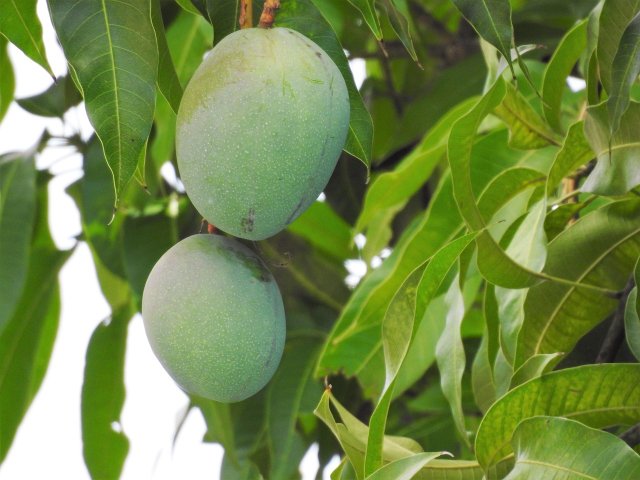
Mangoes are true exotics. If you plant the mango seed, a small mango tree can grow at home. Find out how it works here.
One thing in advance: Unfortunately, your home-grown mango tree will not bear any of the sweet and juicy fruits. The temperatures in this country are simply too low for this, because the mango originally comes from tropical and subtropical areas. But a mango tree is a decorative eye-catcher in the garden.
Not all mango seeds are suitable for self-growing. The mangoes in the supermarkets are harvested in an unripe state, stored in a cool place on their long transport routes and sprayed with certain agents, which reduces the germination capacity of the seeds. However, you can try it with the seed of an organic mango, because mangoes from organic farming are not treated with germination-inhibiting agents.
Make sure you choose a variety of mango that grows small. Some varieties of mango can grow up to 45 meters high and form a tree crown 35 meters in diameter. They don’t reach these dimensions here, but they do need a little space. There are some mango varieties that do not grow that tall:
- Cogshall
- Carrie
- Keit
- Nam Doc Mai
- Palmer
- Irwin
- King Thai
- Sensation
The varieties you are most likely to find are Cogshall and Carrie. They are also ideal for container planting, as they reach a height of about two and a half to three feet.
Note: Avoid flying mangoes if possible, as they have a large carbon footprint. Better are mangoes that have been transported to us by ship – but that also uses a lot of energy.
Contents
Step 1: Prepare the core
First, you need to remove the pulp from the core:
- Peel the mango with a sharp knife and cut the flesh generously around the core.
- Be careful not to damage the core with the knife.
- Allow the kernel to dry slightly and then rub it with a cloth or clean it with a root brush. The core should be free of all pulp residues.
Step 2: Remove seeds from the seed coat

Now you have to break open the core sleeve, which contains the seed.
- Open the kernel by running the knife from the top of the kernel sleeve over the side and then levering the sleeve open.
- Inside the open kernel you will find the seed, a flat bean.
- If the seed is brown, light green or whitish green, it is ready to germinate.
- On the other hand, if the seed is gray and shriveled, you should not use it.
Step 3: Prepare the seed for planting
The seed must now be stimulated to germinate. There are two methods to do this.
Method 1 – Soaking:
- Score the seed very lightly with a knife.
- Put it in water for 24 hours.
- Then wrap it in a clean, damp kitchen towel. Place the towel with the seed in a freezer bag.
- Let the seed germinate for one to two weeks in a warm place.
- It should have formed a root and a germ after this time.
Method 2 – Drying:
- Dry the mango seed well with a clean kitchen towel.
- Then place it in a sunny, very warm place. Leave it there for three weeks.
- After that, you can carefully press it open a little. Be careful not to break it.
- Opened like this, it should dry for another week.
Step 4: Planting seed
After germination, the seed is ready for planting.
- Choose the right container: it should have a diameter of not less than 40 centimeters, have many drainage holes and, ideally, be made of a heavy material such as clay.
- Conventional pot plant soil is suitable for planting. Mix this with some mature compost.
- Fill the container with the mixture and place the seed about 20 centimeters deep in the container. The germ should point upwards and the root downwards.
- Cover the seed with soil, but the germ should still be visible. Use peat-free soil to protect the bogs.
- Water the seed well and keep the soil evenly moist over the next few weeks.
- After four to six weeks, a small mango seedling will have grown.
- When it has rooted through the seedling pot, you can transplant it to a larger pot.

